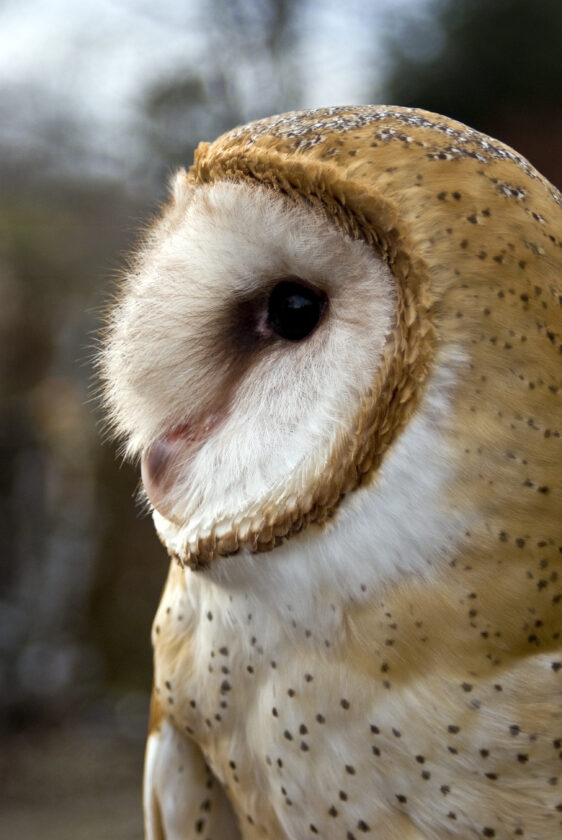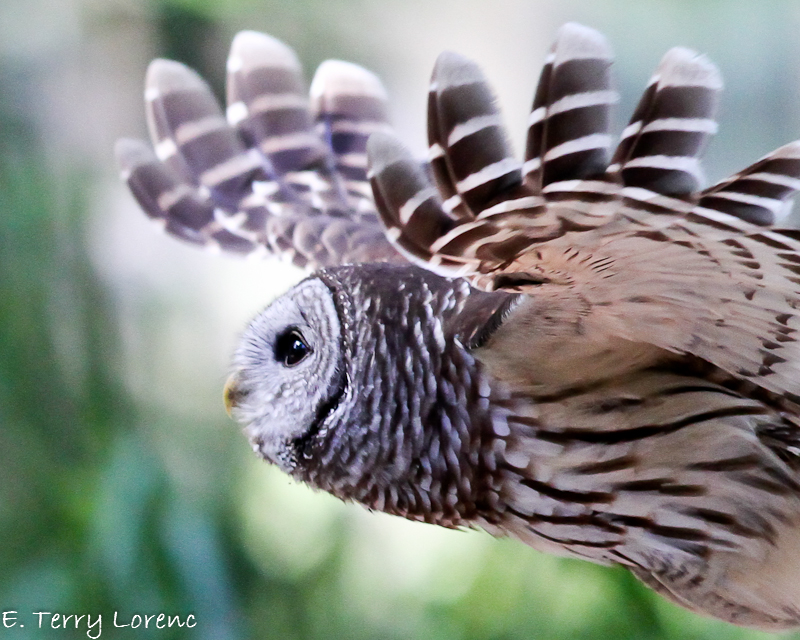The magical world of owls

Barn owls, like the one pictured here, do not hoot, instead their call is an ear-piercing shriek.
- Barn owls, like the one pictured here, do not hoot, instead their call is an ear-piercing shriek.
- Photo by Terry Lorenc A barred owl is pictured taking flight.
Approximately 8 species of owls can be found in the Western NY area throughout the year and although they are rarely seen, nighttime is a prime opportunity to hear their calls. There is a whole world of owl noises to discover, many of which are surprising and unexpected. Although one of our most common owls, the Great Horned Owl, does hoot, many other owls don’t. The Barred Owl, another common owl in this area, has a call best described as someone asking, “Who cooks for you, who cooks for you all?”. Eastern Screech Owls, almost never seen due to their small size and near-perfect camouflage, don’t hoot, nor do they screech, as the name implies. Instead, they make a whinnying noise that sounds like a tiny horse. Northern Saw-Whet Owls earned their name by the call they make which supposedly sounds like an axe being sharped on a whetstone, but I find the evenly spaced toots are also almost identical to a truck backing up. Barn Owls have perhaps the most extreme example of not-hooting, their call is a blood curdling scream.
Not all sounds made by owls are calls, either. Owls that are squabbling may loudly clack their beaks at each other. Barn Owls have been known to hiss at intruders infringing on their territory.
Although owl calls can sound wildly different depending on the species, many of them share the same meanings and sentiments. The hooting of a Great Horned Owl is used to attract a mate and if you are lucky, you may hear two owls calling back and forth, a practice known as duetting. The other calls described above are also used when trying to find a mate. It makes sense that these are the calls most often heard, because when they are not trying to attract a mate they are stealthy predators of the night sky.
Owls have many adaptations that aid them in their pursuit of prey. Unlike most other birds, they have feathers that go all the way down their legs and to the end of their toes. These feathers muffle noise, especially when swinging their legs forward to catch prey in their powerful talons.

Photo by Terry Lorenc A barred owl is pictured taking flight.
Their flight feathers are also unique; they have a fringe on the leading edge that ensures their wings are silent in flight. The shape of the fringe affects how air flows over the wing, and muffles flapping sounds. For this reason, it’s almost impossible to hear an owl approach, which is great for a hungry owl, but not so much for the animal it is hunting.
Most owls in this area tend to share a similar diet of small mammals, such as rodents like rats and mice, but they are often opportunistic, eating whatever they can get their talons on.
Great Horned Owls have earned the nickname tigers of the sky for how ferocious they are, taking down large prey like skunks and even other owl species. Barred Owls have been recorded eating crayfish, which can color the underside of their wings slightly pink. Smaller species like the Eastern Screech Owl may also hunt insects.
Although some owl species in the area currently have stable populations, there are still simple actions you can take to help them out and make life a little easier for them. Instead of using rodenticide to deal with a rodent problem, opt for snap traps. When owls eat rodents that have consumed rodenticide it can make them very sick and even kill them. A single owl can eat hundreds if not thousands of mice in a single year, so having them on your side is a great form of natural pest control. You can even install a nest box to encourage them to come to your property.
Next time I go outside at night, I look forward to listening for one of the many sounds that signal an owl is near.
Audubon Community Nature Center builds and nurtures connections between people and nature. ACNC is located just east of Route 62 between Warren and Jamestown. The trails are open from dawn to dusk and birds of prey can be viewed anytime the trails are open. The Nature Center is open from 10 a.m. until 4:30 p.m. daily except Sunday when it opens at 1 p.m. More information can be found online at auduboncnc.org or by calling (716) 569-2345.





